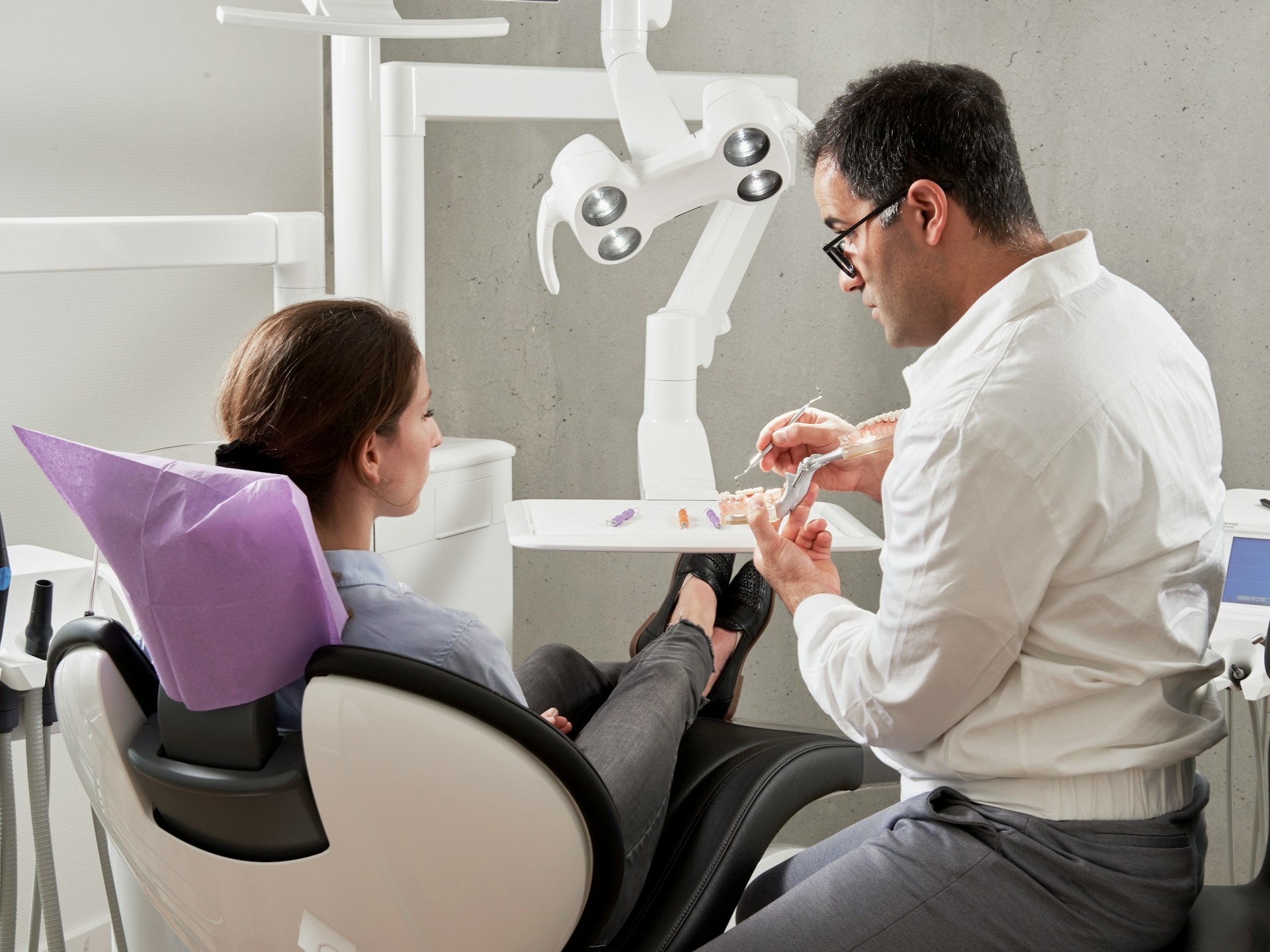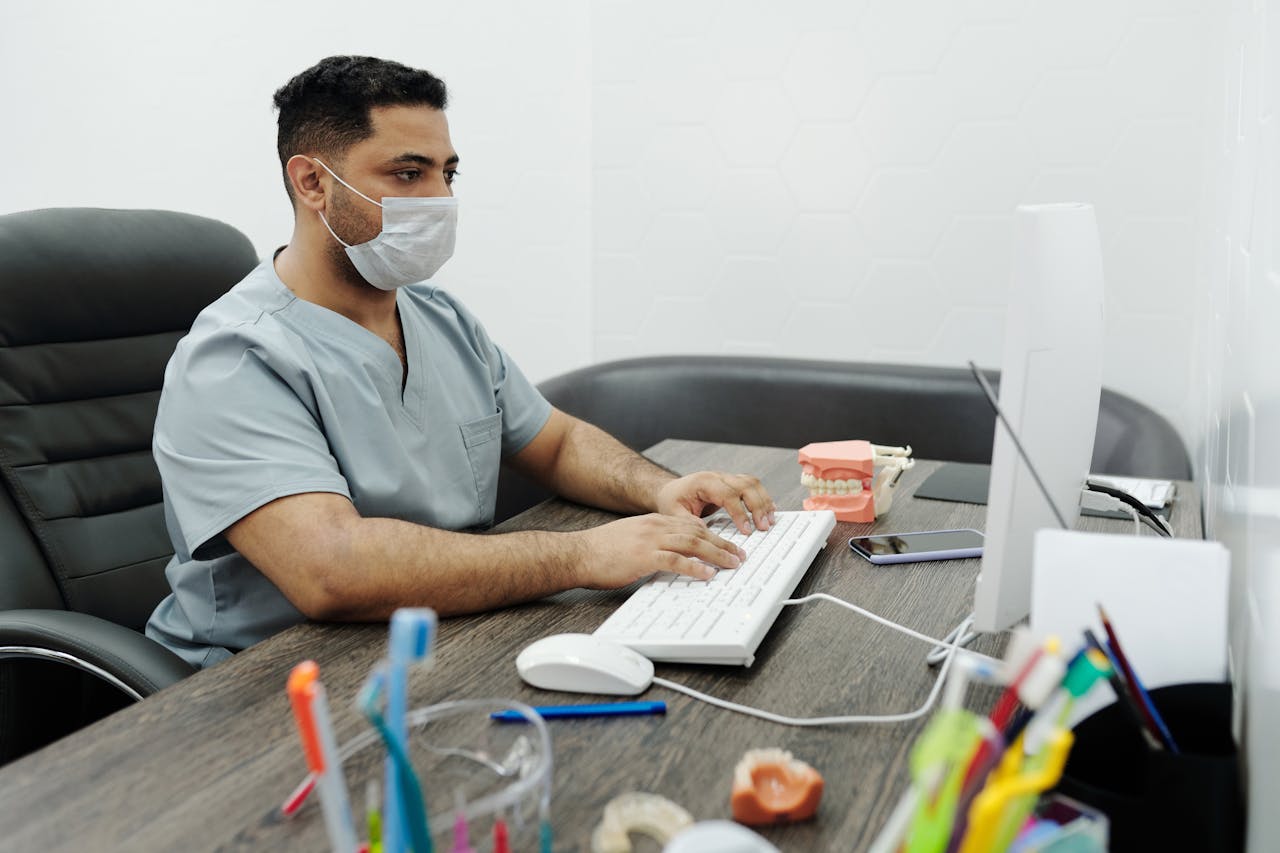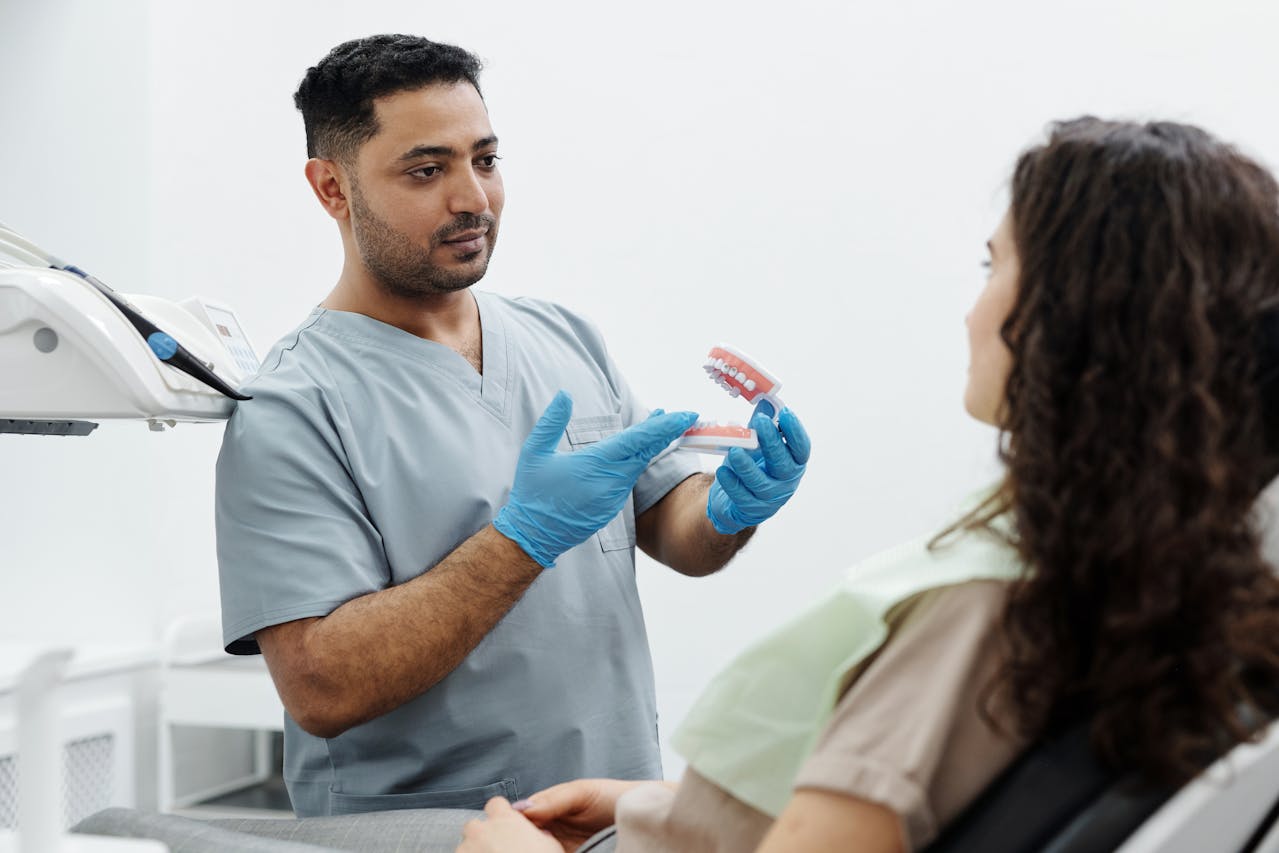Google Paid Ad Strategies For Dental Clinics In California

California dental practices face one of the most competitive digital marketing landscapes in the country, where effective Google Ads campaigns can mean the difference between a fully booked schedule and empty chairs. With 71% of people searching for a dentist online before making an appointment and 86% contacting a practice after their search, paid advertising has become essential for patient acquisition. However, the challenge doesn't end when someone clicks your ad—40% of dental appointment requests occur outside regular business hours, creating a critical conversion gap that many practices miss.
This is where solutions like Arini's AI receptionist platform ensure every lead from your Google Ads investment is captured 24/7, converting calls into booked appointments even after hours and weekends.
Key Takeaways
- California dental practices need strategic Google Ads campaigns with average CPCs ranging from $6.50-$9.75 in competitive markets
- Google Local Service Ads provide top-of-page visibility with pay-per-lead pricing and Google Screened status ((transitioning to Google Verified on Oct 20, 2025)
- 40% of appointment requests happen outside business hours, requiring 24/7 call answering to maximize ad ROI
- California has strict advertising regulations under the California Dental Practice Act that prohibit unverifiable quality claims
- Well-optimized campaigns achieve 300-500% ROI with average conversion rates of 8.36%
- HIPAA compliance may require alternative tracking approaches (e.g., server-side GTM) to avoid sending PHI to non-BAA vendors.
Why Google Ads Are Essential for Dental Marketing in California
California's dental market is saturated with practices competing for the same patients, making organic visibility increasingly difficult to achieve. Google Ads provide immediate placement at the top of search results, connecting your practice with patients actively searching for dental services. Unlike traditional marketing methods that require weeks or months to show results, Google Ads can start driving qualified traffic to your practice within hours of campaign launch.
California's Competitive Dental Landscape
The Golden State's diverse population and high concentration of dental practices create both opportunity and challenge. In major metropolitan areas like Los Angeles, San Francisco, and San Diego, competition drives up costs, with dental keyword CPCs reaching $6.50-$9.75. However, this competition also validates the channel's effectiveness—practices continue investing because they see measurable returns. With 68% of online experiences beginning with a search engine, Google Ads ensure your practice appears exactly when potential patients are ready to book.
How Paid Ads Complement Organic Dental Marketing
While organic SEO builds long-term visibility, Google Ads provide immediate results and precise control over your marketing message. The combination of both strategies creates a comprehensive digital presence. Paid ads can test messaging and service offerings before committing to permanent website changes, while organic efforts build domain authority that improves paid ad Quality Scores over time, reducing costs.
Setting Up Your Google Ads Account for Dental Practices
Proper account setup is foundational to campaign success. Start by creating a Google Ads account linked to your practice's Google Business Profile for seamless integration. Configure conversion tracking from day one using Google Tag Manager, setting up goals for key actions like form submissions, phone calls, and appointment bookings.
Essential Account Settings for Dental Clinics
- Billing setup: Use a dedicated business payment method with appropriate spending limits
- Conversion tracking: Implement call tracking with dynamic number insertion to attribute phone calls to specific campaigns
- Location extensions: Add your practice address to increase local visibility and click-through rates
- Sitelink extensions: Create links to specific service pages, new patient information, and online booking
- Call extensions: Display your phone number with scheduling set to business hours only
For multi-location dental service organizations (DSOs), consider using a Google Ads Manager account to oversee all practice locations while maintaining individual campaign control.
Understanding Google Ads Cost and Budgeting for Dental Clinics
Budgeting effectively requires understanding California's competitive landscape and your practice's financial goals. Most dental practices allocate 5-8% of annual revenue to marketing, with Google Ads representing a significant portion of this investment.
Typical Google Ads Costs for California Dental Practices
- Average CPC: $6.50-$9.75 for competitive dental keywords
- Cost per lead: $50-$85 on average
- New patient acquisition cost: $175-$325, depending on specialty and location
- Minimum recommended budget: $750-1,000 monthly for competitive California markets, with $2,000-5,000+ needed in dense metro areas
How to Calculate Your Dental Practice Ad Budget
Start by determining your target number of new patients per month and multiplying by your average acquisition cost. For example, if you want 10 new patients monthly and your acquisition cost is $250, you'll need a $2,500 monthly budget. Factor in seasonal adjustments—many practices increase budgets during summer months when families schedule dental work before school resumes.
Mastering Google Ads Keyword Planner for Dental Marketing
Keyword research is the foundation of effective dental advertising. Use Google Keyword Planner to identify high-intent search terms that indicate readiness to book rather than just information gathering.
High-Value Dental Keywords for California Markets
Focus on these keyword categories:
- Location + service: "emergency dentist Los Angeles," "dental implants San Francisco"
- Near-me queries: "dentist near me," "same day dental appointments near me"
- Specific treatments: "Invisalign provider Oakland," "wisdom teeth removal San Diego"
- Insurance-related: "dentist accepting Delta Dental," "Medi-Cal dental provider"
Negative Keywords Every Dental Practice Should Block
Implement negative keyword lists to avoid wasted spend on irrelevant searches:
- Informational terms: "how to," "what is," "DIY," "home remedy"
- Job-related: "dental assistant jobs," "dentist salary," "career"
- Educational: "dental school," "free dental clinic," "low income"
- Competitor names: Unless you specifically want to target competitor patients
Google Local Service Ads for Dental Practices in California
Google Local Service Ads (LSAs) represent a game-changing opportunity for California dentists. Launched for dental practices in January 2023, LSAs appear at the very top of search results—above even traditional Google Ads—and operate on a pay-per-lead basis.
What Are Google Local Service Ads for Dentists?
LSAs showcase your practice with a Google Screened badge, business hours, review ratings, and service areas. Patients can call or message directly from the ad, and you only pay when they do. This model eliminates wasted spend on clicks that don't result in contact.
How to Get Google Screened Status in California
To qualify for LSAs, California dental practices must:
- Hold a valid California dental license
- Pass Google's background check requirements
- Maintain adequate liability insurance
- Provide service area information for your practice locations
- Achieve and maintain high performance metrics (response rate, review ratings, scheduling rate)
LSA Performance Optimization
LSA visibility depends on performance factors that Google monitors:
- Response rate: Answer calls and messages promptly
- Review ratings: Maintain 4+ star ratings with sufficient volume
- Scheduling rate: Convert leads into booked appointments efficiently
- Customer complaints: Minimize negative feedback
This is where Arini's AI receptionist platform becomes essential—by answering 100% of LSA-generated calls 24/7 and booking appointments directly into your practice management system, you maintain high response and scheduling rates that keep your LSAs visible at the top of search results.
Creating High-Converting Ad Copy for Dental Services
Ad copy must comply with California's strict advertising regulations while compelling action. The California Dental Practice Act prohibits unverifiable quality claims like "best" or "most experienced," requiring exact pricing information without omissions.
Dental Ad Copy Templates That Convert
Emergency Dental Template:
- Headline 1: Emergency Dental Care Available
- Headline 2: Same-Day Appointments
- Headline 3: [City] Dentist Open Today
- Description: Experiencing a dental emergency? We offer same-day emergency appointments for pain relief, broken teeth, and infections. Call now for immediate care.
New Patient Special Template:
- Headline 1: New Patient Special - $99
- Headline 2: Exam, X-Rays & Cleaning
- Headline 3: Accepting New Patients
- Description: Comprehensive new patient exam, including cleaning and necessary x-rays for just $99. Most insurance plans are accepted. Schedule your appointment today.
Using Ad Extensions to Maximize Click-Through Rate
Maximize your ad real estate with these essential extensions:
- Call extensions: Display phone number with business hour scheduling
- Location extensions: Show practice address and Google Maps integration
- Sitelink extensions: Link to specific services, new patient info, and online booking
- Structured snippets: Highlight service categories like "Cosmetic Dentistry" or "Emergency Care"
- Callout extensions: Promote unique selling points like "Same-Day Appointments" or "Insurance Accepted"
Optimizing Landing Pages to Convert Dental Ad Clicks
Your landing page must deliver on your ad's promise with a seamless user experience and clear conversion paths. 35% of dental practice website traffic comes from paid search, making landing page optimization critical for ROI.
Essential Elements of a Dental Landing Page
- Message match: Headline should mirror ad copy exactly
- Clear call-to-action: "Call Now" or "Book Online" buttons above the fold
- Trust signals: Reviews, credentials, before/after photos
- Mobile optimization: Over 60% of dental searches occur on mobile devices
- Fast load times: Every second of delay reduces conversions by up to 7%
- HIPAA-compliant forms: Secure data collection with proper encryption
Conversion Rate Optimization for Dental Practices
The average dental Google Ads conversion rate is 8.36%, but optimized practices achieve 12%+ through:
- Dedicated landing pages for each major service
- Online scheduling integration that works 24/7
- Prominent phone numbers with click-to-call functionality
- Transparent pricing information, where possible
- Patient testimonials with proper authorization
This is where Arini's Call Answering & Scheduling Module ensures no opportunity is lost—capturing appointment requests from landing pages 24/7 and booking directly into your practice management system, even when your front desk is unavailable.
Geographic Targeting Strategies for California Dental Markets
California's diverse geography requires sophisticated targeting strategies. Use radius targeting around your practice location, typically 5-10 miles for general dentistry and up to 25 miles for specialized services.
Radius Targeting Best Practices for Dental Clinics
- Urban areas: Use smaller radii (3-5 miles) due to higher population density
- Suburban areas: 5-10 mile radius typically optimal
- Rural areas: May need 15-25 mile targeting to capture sufficient volume
- Exclusion zones: Block competitor practice addresses to avoid wasted spend
Multi-Location Targeting for California DSOs
For dental service organizations with multiple California locations, implement location-specific campaigns with:
- Unique ad copy mentioning each city/neighborhood
- Separate landing pages for each practice location
- Location bid adjustments based on performance and competition
- Custom scheduling rules per location
Arini's Integration & Workflow Customization Module supports multi-location DSOs with customizable routing rules that direct calls to the correct California practice based on caller location, ensuring seamless patient experience across your entire network.
Dental Marketing Companies vs. In-House Google Ads Management
Deciding between agency management and in-house execution depends on your practice's resources, expertise, and budget. Agency fees typically range from 10-20% of ad spend plus management fees, while in-house management requires dedicated staff time and ongoing education.
When to Hire a Dental Marketing Agency
Consider agency management when:
- You lack internal expertise or time for daily campaign management
- Your monthly ad budget exceeds $3,000
- You need specialized knowledge of California dental advertising regulations
- You want access to proprietary tools and industry benchmarks
- You're launching complex multi-location campaigns
Questions to Ask Before Hiring a Dental Marketing Company
- What specific experience do you have with California dental practices?
- How do you ensure compliance with California Dental Practice Act advertising rules?
- What HIPAA-compliant tracking solutions do you implement?
- How do you handle after-hours lead conversion?
- Can you provide case studies with similar practices in my market?
Tracking Conversions and Measuring ROI for Dental Google Ads
Effective tracking separates successful campaigns from wasted spend. Implement comprehensive conversion tracking that measures not just clicks, but actual patient appointments and revenue.
How to Set Up Conversion Tracking for Dental Ads
- Phone call tracking: Use dynamic number insertion or Google forwarding numbers
- Form submission tracking: Track contact form completions and appointment requests
- Online booking integration: Monitor completed appointment bookings
- Offline conversion import: Upload appointment show data from your practice management system
Calculating True ROI for Dental Google Ads Campaigns
True ROI includes both direct revenue and lifetime patient value:
- Track production value from new patients acquired through ads
- Calculate patient lifetime value (typically 3-5x initial visit value)
- Factor in referral value from satisfied new patients
- Include cost savings from reduced front desk time handling initial inquiries
Arini's Analytics & Notifications Module tracks call volume and booked appointments from paid ads, providing revenue impact metrics and ROI reporting aligned with PMS data—exactly the kind of comprehensive tracking needed for accurate ROI calculation.
Advanced Campaign Strategies: Remarketing and RLSA for Dentists
Once you have baseline conversion data, implement advanced strategies to maximize ROI. Remarketing targets users who previously visited your website but didn't convert, while Remarketing Lists for Search Ads (RLSA) modifies your search campaigns for past visitors.
How to Build Remarketing Audiences for Dental Practices
Create segmented audiences based on website behavior:
- Homepage visitors: General awareness campaigns
- Service page visitors: Targeted campaigns for specific treatments
- Pricing page visitors: Special offer campaigns with clear CTAs
- Abandoned appointment requests: Urgent follow-up with limited-time offers
Reactivating Lapsed Patients with Google Remarketing
Import your patient database as a customer match list to target past patients who haven't visited in 12+ months. Create campaigns focused on recall appointments, new technology offerings, or special reactivation offers.
Maximizing After-Hours Conversion from Google Ads Campaigns
The most significant missed opportunity in dental advertising is after-hours lead conversion. With 40% of dental appointment requests occurring outside business hours, practices that can capture these leads gain a substantial competitive advantage.
Why After-Hours Calls Matter for Dental Ad ROI
After-hours searchers often have urgent needs or high intent—they're willing to call multiple practices until they find one that answers. These leads typically convert at higher rates than business-hours calls because the patient is actively seeking immediate solutions.
Solutions for Capturing Dental Leads Outside Business Hours
Traditional solutions like voicemail have poor conversion rates—most patients won't leave detailed messages or wait for callbacks. Live answering services are expensive and may lack dental-specific training. AI receptionists like Arini provide the ideal solution, answering 100% of calls 24/7 with dental-trained AI that can handle FAQs, verify insurance, and book appointments directly into your practice management system.
Arini's Call Answering & Scheduling Module eliminates missed opportunities from Google Ads by booking appointments directly into PMS even after hours and weekends, ensuring your advertising investment converts to revenue around the clock.
Frequently Asked Questions
Q: How much should a California dental practice spend on Google Ads?
A: Most successful California dental practices spend $750-5,000+ monthly, depending on market competitiveness. In dense metro areas like Los Angeles or San Francisco, budgets of $2,000-5,000+ are common due to higher CPCs of $6.50-$9.75. Start with at least $750 per month in less competitive markets and $ 1,500 or more in major metro areas.
Q: What's the difference between Google Ads and Google Local Service Ads for dentists?
A: Google Ads operate on a pay-per-click model where you pay every time someone clicks your ad, regardless of whether they contact you. Google Local Service Ads operate on a pay-per-lead model where you only pay when someone calls or messages you directly from the ad. LSAs also appear at the very top of search results with a Google Screened badge, providing higher visibility and trust.
Q: Should I hire a dental marketing company or manage Google Ads myself?
A: For practices spending less than $1,500 monthly on ads, in-house management may be cost-effective if you have the time and expertise. For larger budgets or complex multi-location practices, specialized dental marketing agencies typically provide better ROI through their expertise, tools, and industry knowledge—just ensure they understand California's specific advertising regulations and HIPAA compliance requirements.
Q: What happens to my Google Ads leads when my dental office is closed?
A: Without 24/7 call answering, 40% of appointment requests that occur outside business hours go to voicemail or unanswered phones, resulting in significant missed opportunities. Practices using AI receptionists like Arini capture these leads immediately, booking appointments and answering questions even after hours and weekends, maximizing the return on every advertising dollar spent.
Q: How long does it take to see results from dental Google Ads campaigns?
A: Google Ads can start driving traffic within hours of launch, but meaningful results typically require 30-90 days of optimization. The first 30 days focus on data collection and initial adjustments, while days 30-90 involve refining keywords, improving Quality Scores, and optimizing conversion paths. Practices with proper tracking and optimization typically see positive ROI within 60-90 days.









